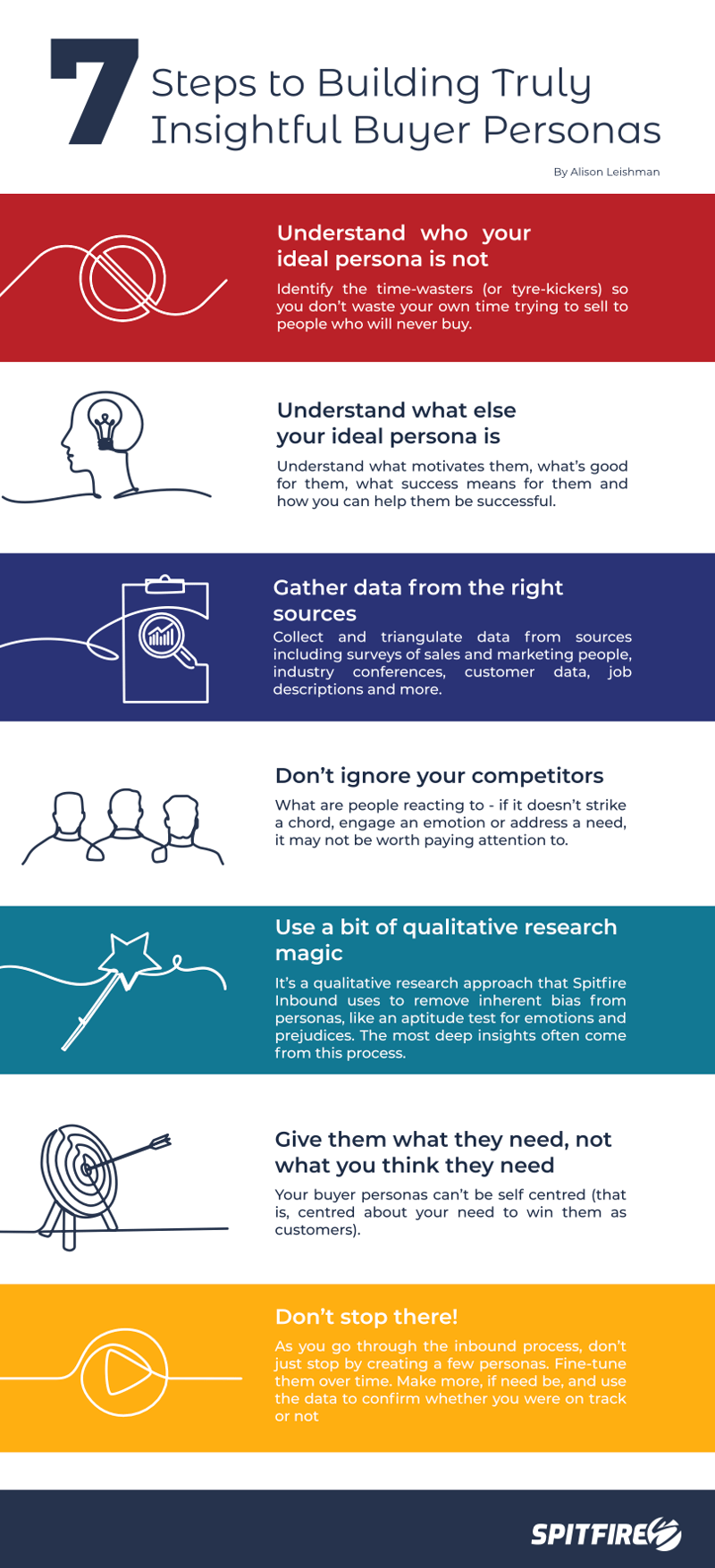Building a buyer persona is a complex process, and our unique inceptor process helps us to create really detailed buyer personas.
Buyer personas are an extremely important part of the inbound marketing process, and direct much of your inbound strategy. We’ve written previously about building insightful buyer personas, but here is our seven step guide to building your own!
1) Understand who your ideal persona is not
Create personas of those you don’t want to focus on. A few examples of this are:
• job-seekers may not be a primary focus for your industry or organisation;
• less-than-ideal customers that you have, but don’t want to have more of;
• customers who may be your target audience in future, but not right now,
• or even people buying your products for the wrong reasons.
Identify the time-wasters (or tyre-kickers) so you don’t waste your own time trying to sell to people who will never buy.
2) Understand what else your ideal persona is
Personas are more than just a job description, demographic, age, industry or level of seniority. They are more than just their demographics or technographics. They’re more than just a pain point. Understand what motivates them, what’s good for them, what success means for them and how you can help them be successful.
3) Gather data from the right sources
Collect and triangulate data from sources including surveys of sales and marketing people, industry conferences, customer data, job descriptions and more. For example, looking at the content of industry events that your personas attends will tell you a lot about their real challenges, rather than the ones you perceive. People who do flooring don’t just talk about flooring at their conferences – they talk about productivity, marketing and sales and building their businesses. Use these insights to help your customers and add real value.
4) Don’t ignore your competitors
How are your competitors addressing your personas’ needs and challenges? Who are they talking to? What are they saying? Find out. Then check: what are people reacting to – if it doesn’t strike a chord, engage an emotion or address a need, it may not be worth paying attention to.
5) Use a bit of qualitative research magic
There’s a risk that when people are asked to provide information that will create personas that they’ll try to be helpful – too helpful, in fact. Being too helpful could prejudice the real data and make them less than perfectly honest. How do you prevent this innate helpfulness? There are secret, magic ways of identifying the underlying truth and meaning – to get a real, raw view about what they think. It’s a qualitative research approach that Spitfire Inbound uses to remove inherent bias from personas, like an aptitude test for emotions and prejudices. The most deep insights often come from this process.
6) Give them what they need, not what you think they need
Creating personas is about combining an understanding of your customers’ demographics and your own business need, but it’s also about your customer’s business. Your buyer personas can’t be self-centred (that is, centred about your need to win them as customers). To reach your customers you have to deliver what they need, rather than what you think they need.
7) Don’t stop there!
As you go through the inbound process, don’t just stop by creating a few personas. Fine-tune them over time. Make more, if need be, and use the data to confirm whether you were on track or not. Then, as circumstances change, tweak the personas to reflect current challenges facing your customers, so you can help them overcome these challenges and thrive.
